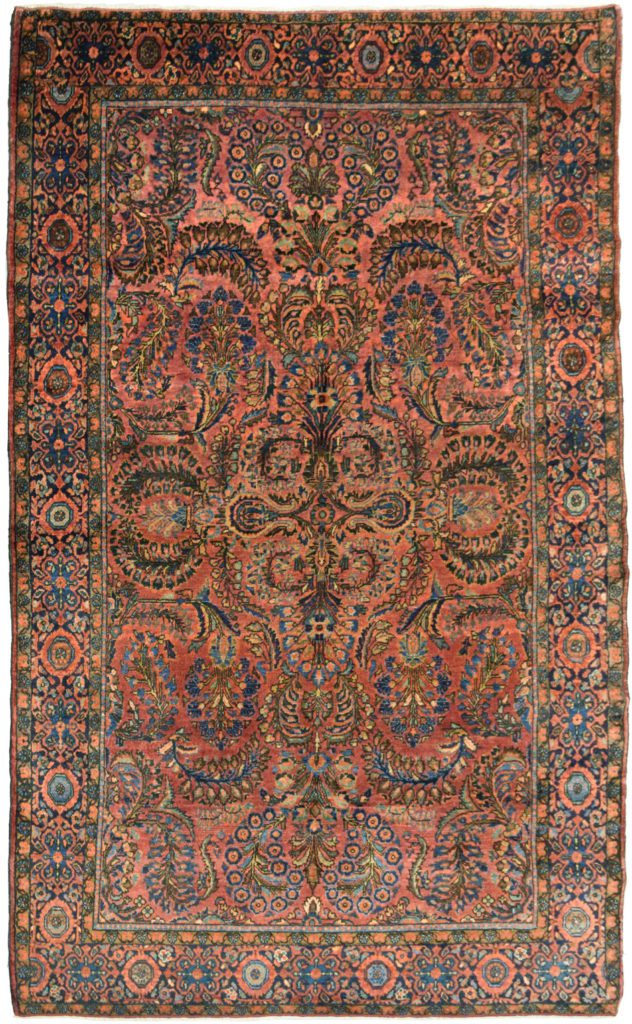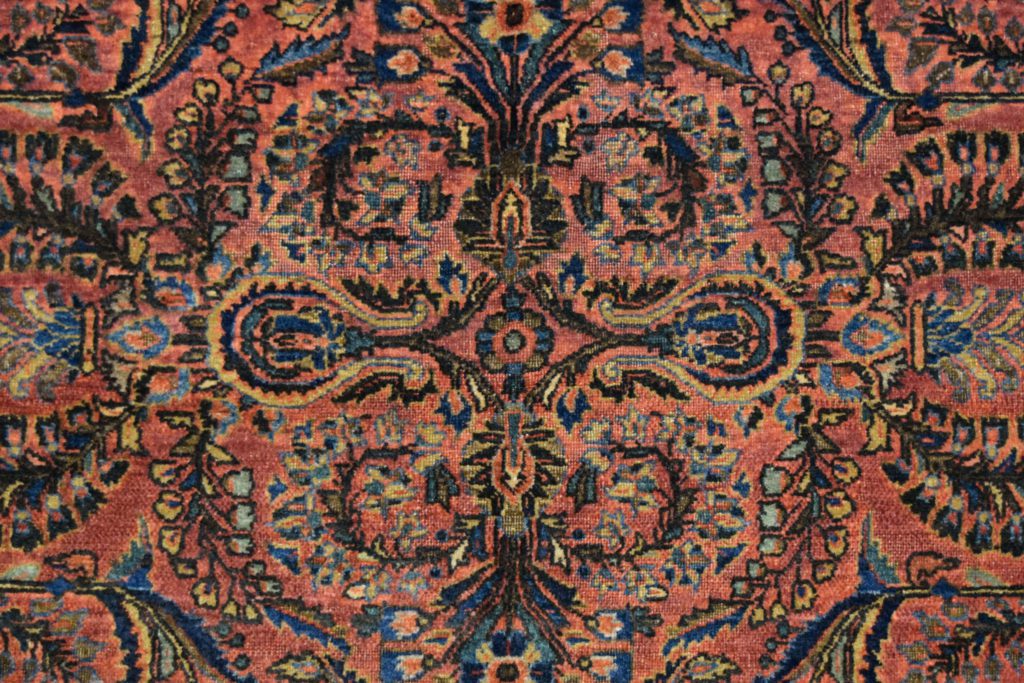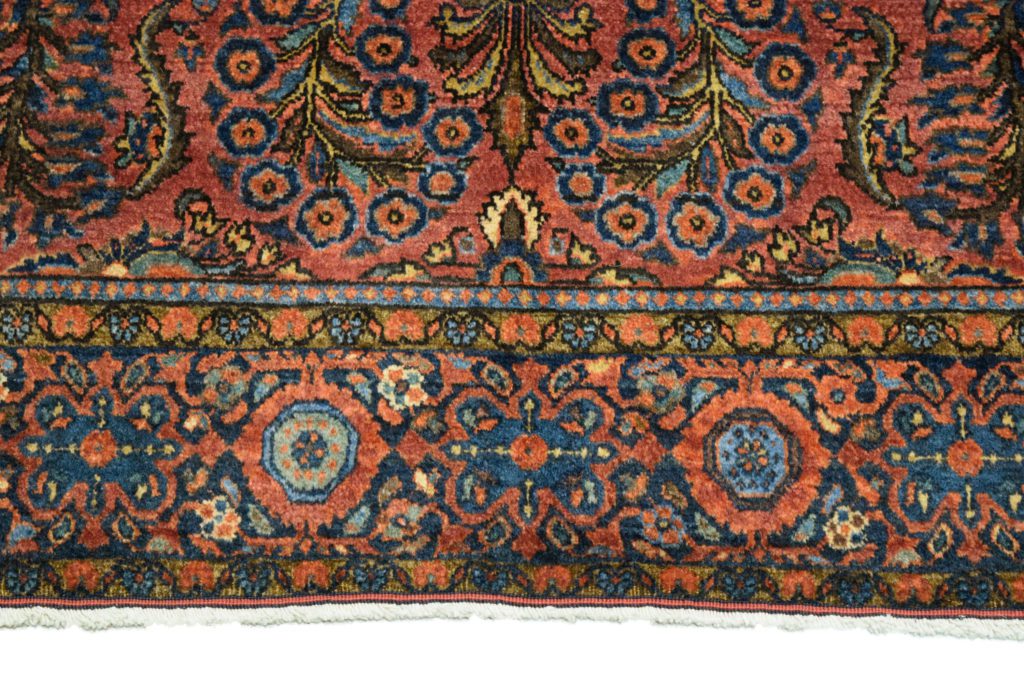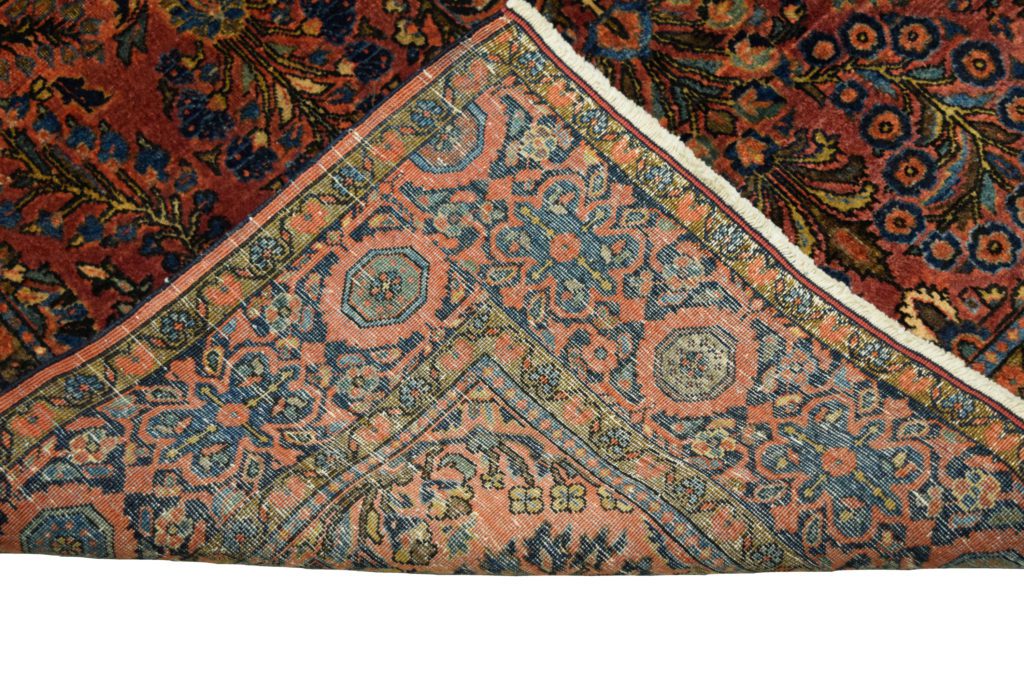Antique Spotlight – Floral Sarouk Carpet
The words “Persian carpet” in casual conversation often evoke nostalgic memories of classic floral motifs in vibrant shades of red and blue. Perhaps you hear the words and think of the treasured family heirloom carpet handed down from generations before. Likely, the rug you are envisioning is more specifically a Sarouk, a quintessential example of fine Persian rug making. Once you see one Sarouk, you cannot help but note its many distinctive, unique characteristics, and the style will always catch your eye. So, kick back, and continue reading to discover more about this classic carpet’s construction, design, and identifying traits.
Woven in Iran, this hand-knotted Sarouk carpet measures 4’ x 6’5” and belongs to the Orley Shabahang Antique Collection. The artisan weavers utilized traditional weaving techniques, passed down from generation to generation, to craft this carpet’s exquisite design. To begin the process, wool shorn from Persian fat-tailed sheep is hand-spun and washed in preparation for dying. The vibrant and harmonious hues of red, pink, green, blue, and brown originate from organic vegetable dyes, preferred by weavers for their bright and fade-resistant qualities. Once dyed, the yarn is washed in natural river water to remove any excess dye from the wool. Once rinsed, the wool is left to bake in the sun to dry and set the wool’s patina. The weavers then hand-knot each thread of the woolen pile onto the cotton warp and weft foundation. This hand-knotted foundation is exceptionally durable, and even after 100 years, the woolen pile is still soft and luxurious while remaining entirely functional. Our antique Sarouk example showcases a traditional Persian flower garden design and incorporates an array of plant motifs. Shades of red, pink, brown, blue, and green wool harmoniously detail the garden. Inside the interior field, a small intricate medallion, completed in a Herati-styled design, with flower and vine motifs sweeping across the rug in blue, green, pink, and brown tones.
Just outside the center, the exterior branches arch in a manner reminiscent of peacock feathers, another classic motif often observed in Persian carpets. Further outward, similarly styled bouquets adorn the field, symmetrically stretching across the background harmoniously. Camouflaged within the bouquets, butterflies and caterpillars hide within the foilage just like insects do in nature. Finally, a multi-banded border incorporates additional interconnecting floral motifs. The level of detail incorporated into this carpet’s design is highly impressive, even among other rugs of this caliber, and especially stunning given its quality construction and craftsmanship.
Compared to other well-known categories of traditional hand-knotted carpets, Sarouk carpets are identifiable by a series of key features. First, Sarouk carpets have large garland motifs that stretch across the field in vertical or circular shapes. Second, the red-pink tone of the background, as also depicted in this week’s example, is strongly associated with Sarouk carpets. Despite signature motifs and coloration, Sarouk carpets are often misidentified for a neighboring style known as Lilihan. Like Sarouk pieces, Lilihan carpets originate from the Arak province and share similar stylized motifs and hues. The easiest way to distinguish between the two is to examine the weave of each piece. Lilihan carpets utilize a weave that is less time-intensive, and when looking at the back of the rug, the Lilihan knot skips over one warp thread, thus allowing vertical foundation lines to be visible from the back. Sarouk carpets also typically have a higher quality weave and thus reveal only the warp threads of the foundation, and even then, only upon a very close examination of the rug.
If this antique Sarouk carpet piques your interest, check out our Antique Collection at Orleyshabahang.com, or visit our digital storefront at 1stdibs.com.




